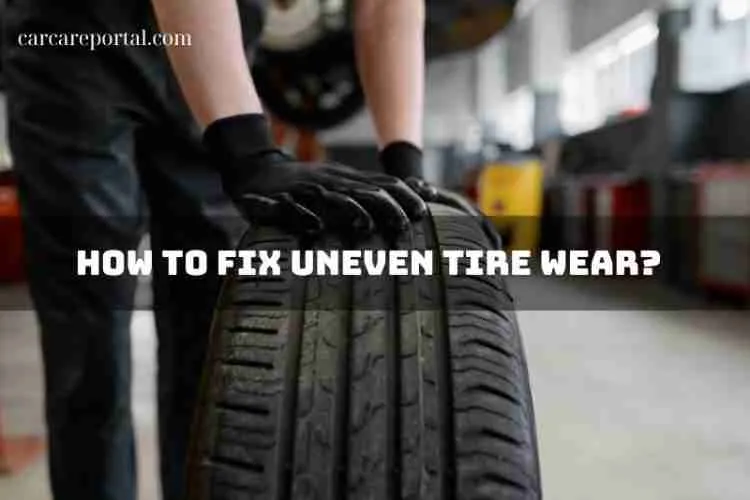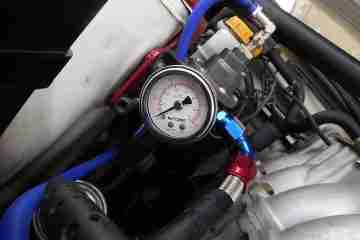How to fix uneven tire wear? Practical Solutions for a Smoother Ride

How to fix uneven tire wear? Uneven tire wear is a common issue that can significantly impact your vehicle’s performance and safety. It not only shortens the lifespan of your tires but also affects the smoothness of your drive and overall vehicle handling.
Understanding how to effectively address and prevent uneven tire wear is crucial for maintaining your vehicle in top condition. In this guide, we will explore the various causes of uneven tire wear and provide practical, step-by-step solutions to fix this problem.
From wheel alignment to proper tire inflation and regular maintenance, we’ll cover all the essentials you need to know to ensure your tires wear evenly, providing you with a safer and more enjoyable driving experience.
Whether you’re an experienced driver or a novice, this guide will equip you with the knowledge and techniques to keep your tires in optimal condition, extending their life and enhancing your vehicle’s performance.
Causes of Uneven Tire Wear
Bad Wheel Alignment: When your car’s suspension system is out of alignment, it can lead to uneven tire wear. Misalignment causes unequal pressure on the tires, resulting in uneven wear.
Under- or Over-inflated Tires: Maintaining the correct tire pressure is crucial. Overinflated tires put too much pressure on a small area, while underinflated tires cause excessive surface area contact with the road, leading to uneven wear.
Unbalanced Wheels: Unbalanced wheels can cause vibrations that affect tire tread. This imbalance leads to uneven tire wear over time.
Broken or Dented Wheels: Wheel damage, often caused by potholes, can prevent smooth tire rotation and result in uneven tread wear due to vibrations.
Over-torqued Lug Nuts and Damaged Wheels: Factors like over-tightened lug nuts, damaged wheels, rust buildup, and worn wheel or hub bearings can contribute to uneven tire wear. Regular inspections and maintenance are essential.
Constant Harsh Braking: Frequent and aggressive braking can create flat spots in the middle of the tire, causing uneven wear. It’s crucial to check your tires if you experience vibrations or shaking during highway driving.
Improper Tire Rotation: Neglecting regular tire rotation can lead to uneven wear. Rotating your tires every six months or 6,000 to 8,000 miles can promote even wear patterns and enhance tire longevity.
How Can I Prevent Uneven Wear?
Avoid Curbs and Potholes: Curbs, potholes, and speed bumps can damage tires and wheels if hit too aggressively. Even if there is no visible damage, such impacts can knock the suspension out of alignment, leading to uneven tire wear. Avoid contact with curbs and potholes, and cross them at safe speeds when encountering speed bumps.
Avoid Hard Braking: Excessive braking can lead to squealing tires, indicating that rubber is being stripped off the tires. To prevent this, accelerate and brake gradually to avoid sudden stops that cause tire wear.
Regular Tire Rotation: Rotate your tires regularly, typically during oil changes. This helps even out the wear rates among the tires because no car is always perfectly balanced.
Alignment Inspection: Periodically inspect your car’s alignment, especially if you notice the car pulling to one side or feeling unstable. Misaligned suspension can result in uneven tire pressure, causing uneven wear. An annual inspection can help ensure proper alignment.
Check Tire Pressure: Maintaining the correct tire pressure prevents uneven wear. Use a pressure gauge to check the tire pressure, and refer to the guide inside your car’s driver-side door for the recommended pressure levels. Avoid using the numbers on the tire itself, as they may not be accurate.
how to fix uneven tire wear
1. Visual Inspection:
Visually inspect the tires by looking at the tread pattern and depth. The tire tread should appear as a consistent pattern across the entire tire width.
Look for the following signs of uneven wear:
- Balding: If there are areas of the tire where the tread is significantly worn down or bald, it indicates uneven wear.
- Banding: Uneven wear may create bands or patches where the tread depth is noticeably different from the rest of the tire.
- Bubbling: Bulges or bubbles on the tire’s sidewall can indicate internal damage caused by uneven wear.
- Stripes: Uneven wear can create stripes or areas where the tread has worn away, exposing the underlying surface.
2. Tire Tread Depth Gauge:
Use a tire tread depth gauge to measure the tire tread depth. Insert the gauge into the tread grooves at several points around the tire.
Check if the measured tread depth is within the safe range. Tread depth is typically measured in millimeters or 32nds of an inch. Refer to your local regulations or manufacturer recommendations for the minimum safe tread depth.
Uneven wear may result in variations in tread depth across different areas of the tire, indicating the need for inspection and potential replacement.
When To Bring Your Car In for Tire Replacement?
Uneven Wear: Visually identifying uneven wear on your tires indicates that replacement is needed. Uneven wear can affect handling, traction, and control, posing safety risks. Make an appointment with a trusted repair shop when you notice this issue.
Tread Depth: Monitor the tread depth of your tires using a tread depth gauge. When the tread depth reaches unsafe levels, it’s time for replacement. Refer to local regulations or manufacturer recommendations for minimum safe tread depth, which may vary.
Flat Tires: If you experience flat tires due to excessive wear or damage, don’t continue driving on them. Flat tires can lead to further damage, including rim damage. Replace flat tires promptly to ensure safe driving.
Loss of Control: If you notice a loss of control while driving, especially in wet or slippery conditions, it could be a sign of tire wear. Have your tires inspected and replaced if necessary to restore safe handling.
Regular Inspection: Schedule regular tire inspections as part of routine maintenance. A technician can assess the condition of your tires and recommend replacement when needed.
Tire Rotation: When replacing tires, consider rotating them as well. Rotating tires helps ensure even wear patterns, extending the life of your tires and promoting safe driving.
Replace in Pairs: It’s often recommended to replace at least two tires simultaneously, especially if uneven wear is present. This helps maintain balanced wear rates among all tires on your vehicle.
How to fix uneven tire wear?
Check and Adjust Tire Pressure: Start by checking the tire pressure in all four tires. Ensure that they are inflated to the manufacturer’s recommended pressure levels, usually found in the owner’s manual or on a sticker inside the driver’s side door jamb. Correct tire pressure is crucial to distribute the weight evenly and prevent uneven wear.
Professional Wheel Alignment: If your tires have experienced uneven wear, getting a professional wheel alignment is highly recommended. Misaligned wheels can cause uneven tire pressure, leading to uneven wear. A skilled technician will adjust the wheel angles to the manufacturer’s specifications, ensuring proper alignment.
Inspect Suspension Components: Have the suspension components of your vehicle inspected for any damage or wear. Damaged or worn-out suspension parts can contribute to uneven tire wear. If any issues are identified, such as worn bushings, ball joints, or struts, they should be replaced promptly.
Regular Tire Rotation: To promote even wear across all tires, implement a regular tire rotation schedule. This practice involves moving the tires to different positions on the vehicle at specific intervals, typically during oil changes. Proper rotation helps equalize wear patterns and extend tire life.
Consider Tire Replacement: If you have tires with significant and irreparable uneven wear patterns, it may be necessary to replace them. Uneven wear compromises tire performance and safety. When replacing tires, ensure the new ones are properly balanced and aligned.
FAQs
What leads to excessive wear on the inner or outer sides of tires?
Excessive wear on the inner or outer edges of tires, often called “toe wear” or “camber wear,” can indicate misaligned wheels. Bridgestone suggests that correcting this issue usually involves a visit to a mechanic to adjust the wheel alignment.
What causes the center of tires to wear out quickly?
When the middle part of a tire wears down faster than the edges, it’s often a sign of overinflation. Carcareportal recommends checking your vehicle’s manual or the sticker inside the driver’s doorjamb for the correct tire pressure and adjusting the inflation level accordingly.
Why do the outer edges of tires wear down faster?
According to Popular Mechanics, quicker wear on the outer edges compared to the center of a tire typically indicates under-inflation. It’s advised to follow the tire pressure guidelines on the tire’s sidewall and inflate it as needed.
What causes cupping wear on tires?
Cupping wear, identified by a diagonal scalloping pattern on the tire, often points to issues with the suspension, such as wear or damage. Pep Boys notes that this is a severe issue, necessitating immediate attention from a mechanic.
What leads to patchy wear on tires?
Patchy wear on tires usually signals that the tire is unbalanced. The National Highway Traffic Safety Administration recommends getting your tires spun and rotated by a mechanic, ideally every 5,000 miles. However, consulting your vehicle’s owner’s manual for specific guidance is also wise.
Can Uneven Wear on Tires Be Fixed?
No, it cannot be fixed once uneven tire wear has occurred. The rubber of the tire that wears away cannot be replaced. If you notice uneven wear, it’s essential to take preventive measures, but severe cases may require tire replacement.













No Comment